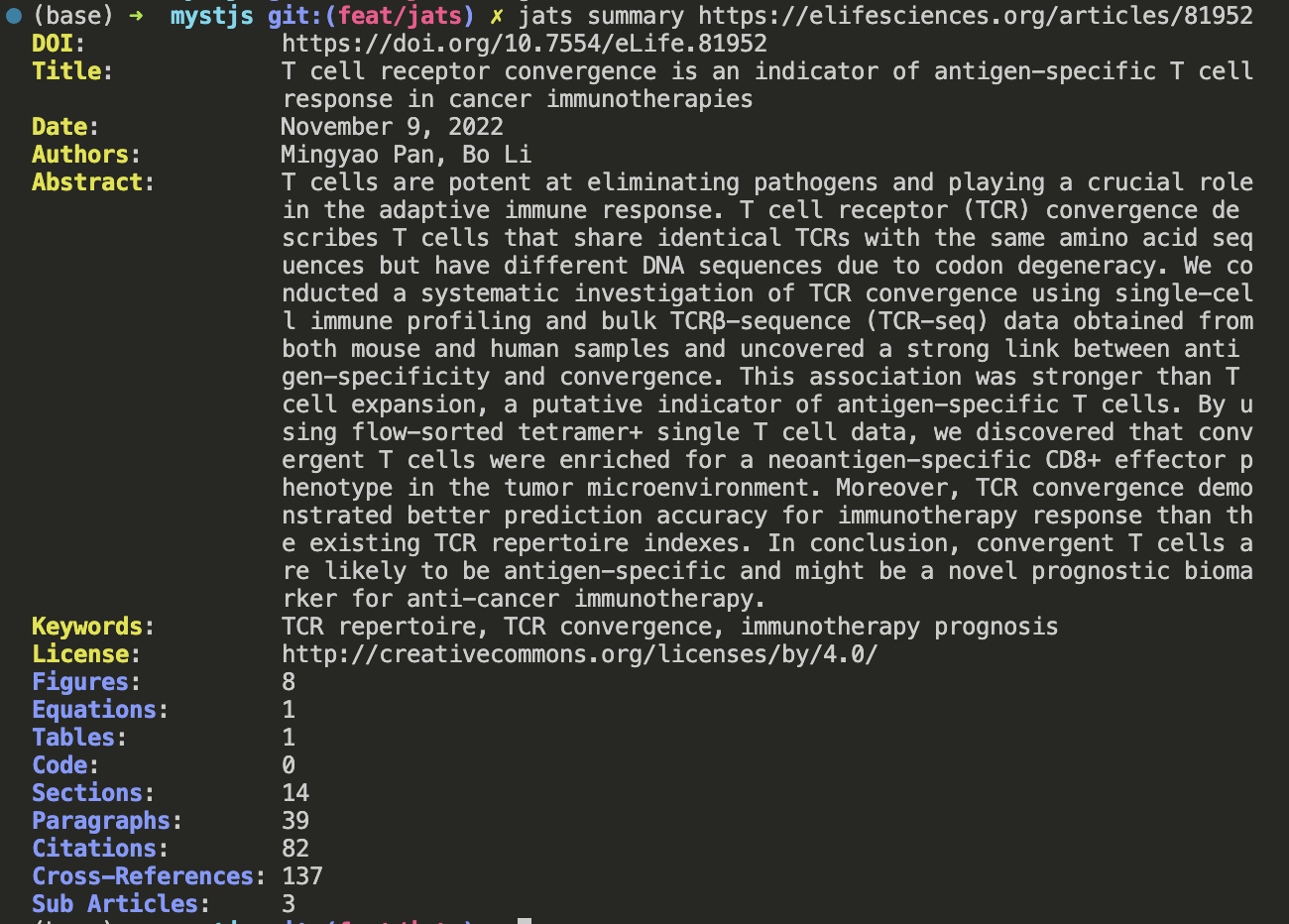jats-xml
Types and utilities for working with JATS XML documents in Node and Typescript.
Read and write JATS XML from node or see summries from the command line.
To use from the command line, use the -g to create a global install, which will provide a jats CLI:
npm install -g jats-xml
jats -v
What is JATS?
JATS is a NISO standard for Journal Article Tags Schema, which is a way to define the XML structure of a scientific article semantically. This includes the front-matter (authors, funding, title, abstract, etc.), the body of the article (sections, figures, equations, tables, etc.), and back-matter (references, footnotes, etc.). The JATS can also contain sub-articles.
The standard documents are hosted by the NIH https://jats.nlm.nih.gov/. There are three flavours, this library currently uses in most cases the most precriptive tag set (for article authoring). Another helpful resource is https://jats4r.org/, which provides other examples and recomendations for JATS.
Note that most publishers do not provide the XML as a first class output - they should, it is an important part of open-science to have the content programatically accessible and interoperable. It is only FAIR 😉.
From the command line
Commands available:
download: attempt to find the JATS file and download it locally.
jats download https://elifesciences.org/articles/81952 article.jatsNote, currently this just downloads the XML, not the associated files.
summary: summarize the contents of the JATS, given a URL, DOI, or local file
jats summary https://elifesciences.org/articles/81952
jats summary 10.1371/journal.pclm.0000068
jats summary /local/article.jatsThis will provide a summary, including a list of what the JATS file contains.
validate: validate local file against JATS Archive DTD schema. By default, this uses JATS 1.3.
jats validate article.jats --jats 1.2 --mathmml 2test: test a JATS file against a list of unit tests in YAML
The test cases are useful for known exports and expecting specific pieces of information in the XML.
jats test article.jats --cases tests.ymlcases:
- title: Correct publisher ID (publisher-id)
select: 'front > journal-meta > journal-id[journal-id-type="publisher-id"] > *'
equals:
type: text
value: plos
- title: Every orcid is authenticated
selectAll: 'front > article-meta > contrib-group > contrib > contrib-id'
equals:
contrib-id-type: orcid
authenticated: 'true'Working in Typescript
All tags are accessible as types/enums. There is also documentation from each node-type
import { Tags } from 'jats-xml';
Tags.journalId;Reading JATS in Node
import 'fs' from 'fs';
import { Inventory, toDate } from 'jats-xml';
import { toText } from 'myst-common';
import { select, selectAll } from 'unist-util-select';
const data = fs.readFileSync('article.jats').toString();
const jats = new JATS(data);
// Easy access to properties
jats.doi
jats.body // A tree of the body (or front/back)
toDate(jats.publicationDate) // as a Javascript Date object
select('[id=fig1]', jats.body) // select a figure by an ID
selectAll('fig', jats.body) // Or selectAll figuresWrite JATS in Node
TODO!
As of v1.0.0 this package is ESM only.
Made with love by
Curvenote



